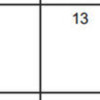Great news!!
The base is working. What would normally take most of you guys 15-20 minutes, took me more than an hour, but I got it. Yes the nut was totally loose. Of course as I was putting it back together, one of the wires broke on the charger switch, so I soldered that back on. Thanks for the hint about the button. That saved me some headaches.
Dale, the numbers are in: 1982 no load and 976 with the layout connected. I think we have a winner!!!!
With this resolved, I can move on to track debugging which should be a little more academic. I know that if I place a wire above the track, it will work. The trick is to get the signal without making it ugly. And no, I don't run electrics so please don't say catenary.
Chuck, I totally agree that the challenge is part of the fun here. On my left forearm I have a tattoo that says " NOTHING IS EASY". If it was everyone would do it. There is a real sense of accomplishment when we can make things work, and maybe more so when we test the theoretical limits of an engineered product.
There will be more challenges with this railroad, I have no doubt of that.






